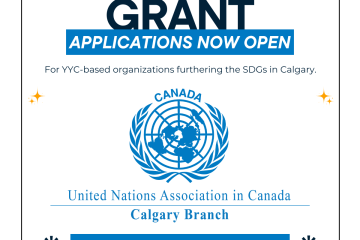
Image source: UN Water
We need to give a crap about
World Toilet Day
By Angelina Patoka
Now I know what you’re thinking, The United Nations (UN) celebrates World Toilet Day?… is this a joke? Well, no, actually. World Toilet Day (November 19) is linked to water security and healthcare, and its closely aligns to UN Sustainability Goal 6: Clean Water and Sanitation.
The United Nations estimates that up to 3.6 billion people do not have access to an adequate toilet facility, at least two billion people drink water contaminated with faeces, and over 700 children under the age of five die from diarrhoea related diseases that are linked to unsafe water and poor sanitation every day.
Poor sanitation systems can contaminate drinking water sources and food sources like rivers and food crops, resulting in the spread of deadly diseases among the wider population, which in turn places a severe strain on healthcare systems.
The organization goes as far as recognizing sanitation as a human right. One that is in constant conflict with population growth in developing countries and water insecurity linked to climate change and pollution. The UN insists that there will be no sustainable future without toilets… yet so many of us take toilets for granted.
The federal government and other provinces have mandates which means that no matter the public space, be it a mall or a construction site, Canadians have access to toilets almost everywhere they go.
The Canadian discrepancy
Canada’s water contamination levels are not in the clear by any means. Canada has failed to address the longstanding water insecurity among First Nations communities. Most recently affecting the residents of Iqaluit.
Dated infrastructure in Indigenous communities affected by the housing crisis intersects with water insecurity. This contributes to sanitation problems that majority Caucasian cities and towns are capable of tackling, as Vernon, British Columbia, used bacterial source tracking technology to find the origin of the contamination to contain, yet for some reason such technology is unavailable to Indigenous communities.
A consequence of the water crisis is the fact that Indigenous Peoples are disproportionately more likely to die from waterborne diseases. Though exact numbers are unknown because Canadian governments do not track data on water-related illnesses or deaths.
The Far North may seem as a ecologically pristine, however, persistent organic pollutants (POPs) carried by water and air to the Arctic profoundly affect the livelihood of Inuit peoples.
POPs are mostly products and by-products of industrial processes. This includes fertilizers made from human excreta, which are still used in Canada. While this is not a problem, as human waste was historically used as a fertilizer in numerous cultures, an industrialized world means the content within human waste contains greater amounts of POPs.
POPs contain pathogenic toxins that are resistant to degradation. Alarming rates of POPs appear in the stool samples of infants and the breastmilk of Northerners who live in the Arctic and near-Arctic regions of Canada. Poor water sanitation makes it much worse. It fosters a dangerous feedback loop wherein Northerners are exposed to higher rates of POPs than the average Canadian in large cities like Toronto and Calgary.
It gets worse…
Even if Canada uses its most advanced water sanitation systems, purified water that is free of pathogens contains chemicals like nitrogen and phosphorous. If water treatment facilities have leakage problems or if they are authorized to release certain quantities of purified water into rivers and oceans, these chemicals can lead the over-fertilization of water, which is linked to algae blooms that kill marine life and harm human health. Therefore, adequate water treatment facilities are imperative to the sustainable future of Canadians.
So what does the future hold for sustainable sanitation?
The question of just how sustainable the Western water sanitation systems are in the long run, and whether those expensive facilities are truly suitable for the whole world and for every community necessitates a separate blog post (at the very least) but for now it appears to be satisfactory enough for Canadian governments, who they do not perceive water sanitation nor water insecurity as an issue of national importance. Evidently, water sanitation is taken for granted by Canadians and the Canadian governments. Negligence is convenient and uncontested because Canadian minors and adults enjoy a low mortality rate and one of the lowest rates of water contamination in the world. At least in places where it matters…
Toilets and water sanitation systems are linked to human welfare. Unless Canadian governments address the water crisis and water contamination among First Nations peoples and Northerners, Goal 6 and the World Toilet Day will continue to matter.
Admittedly, problem-solving in the Far North is much more costly and complicated than in the south and the looming global water crisis relative to overpopulation and increased industrialization requires multilateral solutions. Nevertheless, it ought to be extremely important to the otherwise environmentally conscious federal government.
We live on a planet that is mostly covered by water, yet we neglect it because it seems so abundant. It is not. Not as long as we continue to mismanage, waste, and deny. Don’t take water sanitation for granted. Appreciate your working toilets. They handle more crap than anyone else does.
Happy World Toilet Day.
——————————-
Advocacy for water sanitation in Canada:
Support water charities in Canada and around the world: https://www.canadahelps.org/en/support-water-charities/.
A guide for First Nations communities and advocates: https://www.hrw.org/report/2019/10/23/human-right-water/guide-first-nations-communities-and-advocates#.
—————————-


